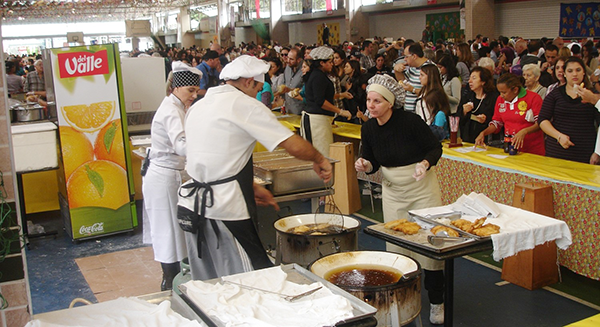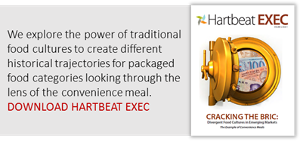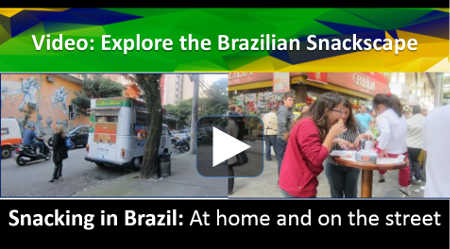Snacking Brazilian style: A shift away from traditional fresh to packaged goods
 Brazil is a hot topic these days. With the Rio Olympics a week away, we’re taking a look back in time to 2012 when a team of our cultural ethnographers ventured to Brazil on a two-week journey to the markets of São Paulo and Recife. The mission: to better understand Brazil’s impassioned food culture — particularly its snacking culture.
Brazil is a hot topic these days. With the Rio Olympics a week away, we’re taking a look back in time to 2012 when a team of our cultural ethnographers ventured to Brazil on a two-week journey to the markets of São Paulo and Recife. The mission: to better understand Brazil’s impassioned food culture — particularly its snacking culture.
This immersive exploration uncovered the many facets of Brazil's snacking culture and discovered that there is great opportunity for CPG companies because Brazilians are "snackers" by nature. Nibbling is part of their cultural heritage, and they do so without the guilt often associated with snacking in the U.S.
The team’s observations and analysis are documented in the report Global Snacking: Brazil. Global Snacking: Brazil provides vital cultural understanding to help consumer packaged goods companies navigate this new international terrain in emerging markets.
 The Hartman Group is uniquely positioned to be the best possible cultural guide: we’re experts in global consumer culture — not just U.S. culture. Our in-house cultural experts have worldwide expertise, having spent extensive time immersed in the consumer cultures of South America, India, Asia and across Europe. We understand how brands and strategies that work in the U.S. marketplace do and do not translate to emerging markets. We provide the most comprehensive understanding of the “why” behind the buy, and why differences exist compared with the U.S. market.
The Hartman Group is uniquely positioned to be the best possible cultural guide: we’re experts in global consumer culture — not just U.S. culture. Our in-house cultural experts have worldwide expertise, having spent extensive time immersed in the consumer cultures of South America, India, Asia and across Europe. We understand how brands and strategies that work in the U.S. marketplace do and do not translate to emerging markets. We provide the most comprehensive understanding of the “why” behind the buy, and why differences exist compared with the U.S. market.
Traditionally, snacking in Brazilian food culture was composed of freshly made carbohydrate-rich savory snacks or sweets, but this is rapidly changing with increased purchasing power and greater access to travel. A common theme in snacking behavior, whether health and wellness-oriented or indulgent, is the desire for satiety. Brazilians are always on the move, and getting things done is paramount. Their traditional diet of high amounts of starch and sugar produces blood sugar swings that create the ongoing need for fuel.
Packaged snacks have great symbolism for Brazilians. U.S. CPG brands have significant badge value, particularly with respect to the emergent middle class. Not that long ago, only the wealthier classes could afford packaged snacks, causing a can of Pringles to be a coveted status symbol. Today, many more Brazilians are able to afford branded CPGs and are delighted to participate in “middle class” culture.
While many packaged snacks are purchased on the street (rua), they are not typically consumed in the moment but rather at home (casa) or work, contrasting with freshly made snacks (often traditional sweet or savory pastries) that are enjoyed in shops, very seldom while on the go. Brazil’s upper classes find eating on the street to be in poor taste. However, the emerging middle class is more at ease eating on the go and should be a great source of growth for branded packaged snacks in the near future.
The flavor profiles found in Brazil tend to be highly sweet or typical savory flavors. Health and wellness efforts are curiously a few decades behind the U.S., with flavor taking precedence over health attributes. This disconnect can be attributed to Brazil’s playful Carnaval-like approach to life, where enjoying oneself is the overriding concern. Interestingly, within the realm of health and wellness, functional beauty snacks and beverages are growing categories. As health and wellness considerations develop, opportunities will continue to arise (e.g., Better for You).
Check out the video about our team’s ethnographic excursion to Brazil and the report.

